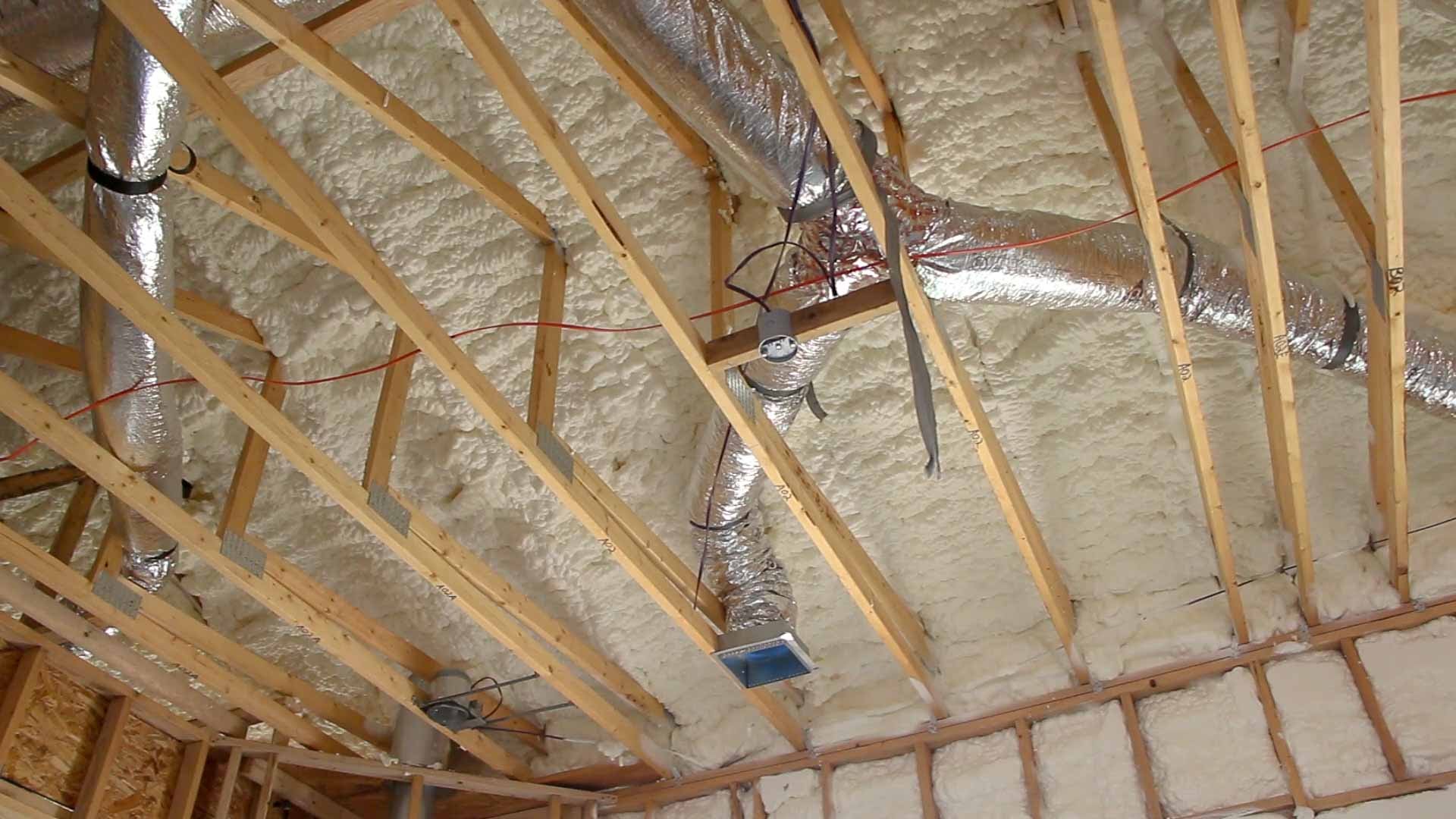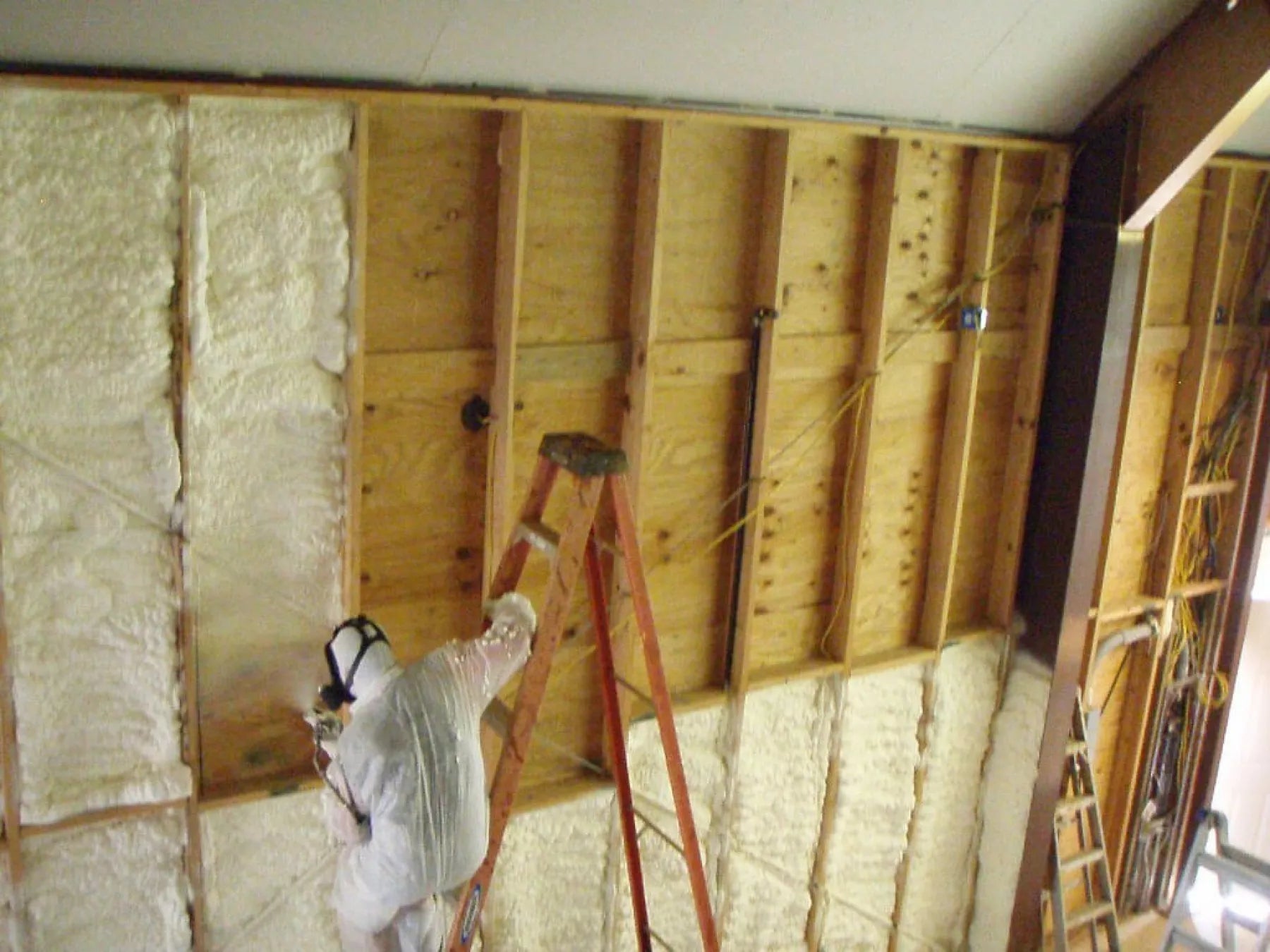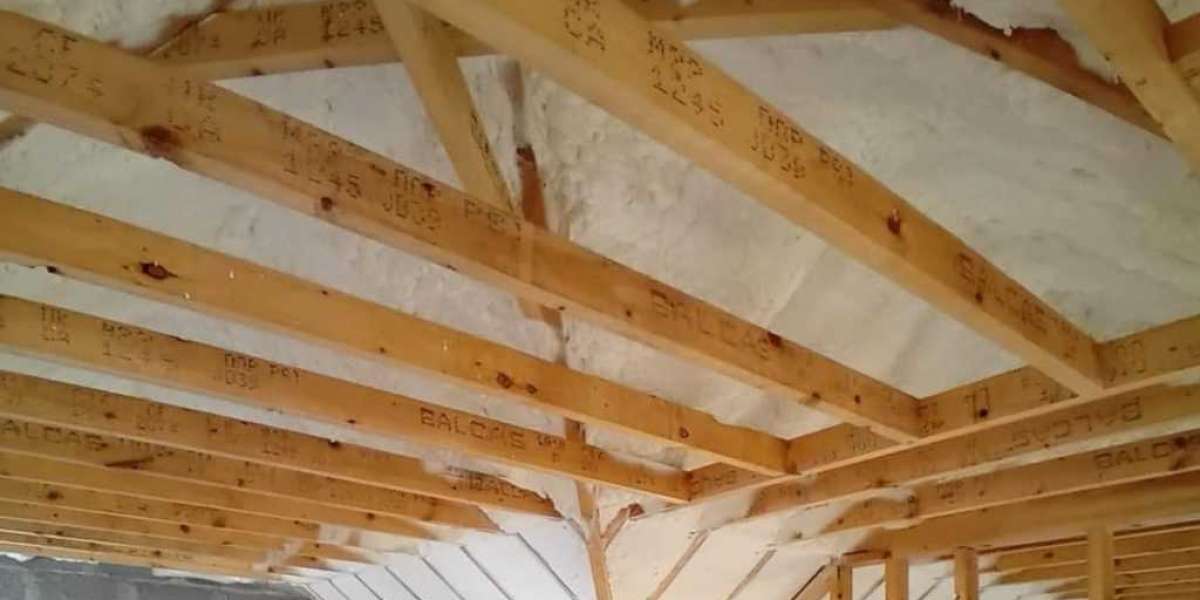Spray foam roof insulation dramatically enhances a home’s energy efficiency by forming a seamless, airtight barrier that minimizes air leakage and heat transfer. Unlike traditional insulation materials, spray foam expands upon application to seal all gaps, joints, and voids—making it uniquely effective at stopping conditioned air from escaping and outdoor air from entering. This improves indoor temperature regulation and significantly reduces the energy demand on HVAC systems throughout all seasons.
Installing spray foam insulation along the roofline stabilizes interior temperatures, reduces hot and cold spots, and leads to more predictable utility bills. It also contributes to quieter indoor environments and greater durability in roof structures. This article explores the mechanics, performance, comparison data, and decision factors behind why spray foam roof insulation is a strategic choice for long-term energy performance and comfort.
How Spray Foam Roof Insulation Works
Spray foam insulation consists of two liquid components—typically an isocyanate and a polyol resin—that react when combined to form an expanding foam. When applied beneath a roof deck, the foam adheres directly to the substrate, swelling to fill and seal structural gaps and cavities.
Key Energy Efficiency Contributions
- Complete air sealing eliminates uncontrolled infiltration and exfiltration
- High R-value per inch dramatically slows conductive heat flow
- Built-in moisture resistance helps avoid thermal performance loss
- Bonds to roof surfaces, adding structural support and rigidity

Spray foam’s ability to serve as both insulation and an air barrier is what sets it apart. This dual function allows it to outperform traditional materials even with thinner applications, making it a suitable choice for homes seeking deep energy retrofits or superior thermal resistance.
Technical Performance Compared to Other Insulation Types
Feature | Spray Foam (Closed Cell) | Spray Foam (Open Cell) | Fiberglass Batts | Blown-In Cellulose |
R-Value per Inch | 6.0 - 7.5 | 3.5 - 4.0 | 2.9 - 3.8 | 3.2 - 3.8 |
Air Seal Capability | Excellent | Good | Poor | Moderate |
Moisture Resistance | High | Moderate | Low | Low |
Lifespan | 20-30+ Years | 20+ Years | 10-15 Years | 10-20 Years |
Application Area | Roof, walls, foundation | Roof, walls | Walls, attics | Attics, walls |
Structural Support | Yes | No | No | No |
Bonus Tip: Closed cell foam adds tensile strength to roof assemblies, making it particularly useful in hurricane or high-wind regions where uplift resistance matters.
Energy Savings and Long-Term Value
According to data from the U.S. Department of Energy, heating and cooling constitute 50% to 70% of a home’s energy use. Roof insulation acts as the primary thermal boundary in most structures, directly affecting how much energy is retained or lost. Spray foam insulation, when correctly installed, significantly slows down thermal movement and prevents unnecessary air exchange.
Market Data Point: A 2023 study from the Building Efficiency Initiative reported that homes insulated with closed cell spray foam saw a 33% average reduction in annual energy costs compared to homes with standard fiberglass batts.

Energy Efficiency Benefits Table
Benefit | How It Improves Efficiency |
Air Seal | Blocks air leaks that reduce system efficiency |
High R-Value | Increases resistance to heat flow through the roof |
Moisture Barrier | Keeps insulation dry, preserving thermal performance |
HVAC Load Reduction | Lowers runtime, increasing HVAC system lifespan |
Even Temperature Distribution | Eliminates inconsistent heating and cooling in top floors |
Bonus Tip: For best performance, integrate roof spray foam with energy-efficient ventilation and attic air sealing techniques.
Types of Spray Foam Used in Roof Insulation
Closed Cell Spray Foam
- Dense, rigid foam that creates a hardened barrier
- Delivers superior R-values per inch of thickness
- Serves as both an insulator and vapor barrier
- Works best in unvented attic assemblies or external roof decks
Open Cell Spray Foam
- Soft, flexible texture that expands extensively
- Lower R-value per inch but effective for interior roofline cavities
- Allows vapor permeability, which can be ideal in certain humid zones
- More affordable and lighter than closed cell foam
Technical Specifications
Specification | Closed Cell Foam | Open Cell Foam |
R-Value per Inch | 6.0 - 7.5 | 3.5 - 4.0 |
Vapor Permeability | Low (acts as vapor barrier) | High (vapor permeable) |
Expansion Rate | 30x original volume | 100x original volume |
Density | 1.75 - 2.2 lbs/cu ft | 0.4 - 0.6 lbs/cu ft |
Sound Dampening | Moderate | Excellent |
Application Thickness Range | 1–3 inches (typical) | 3–6 inches (typical) |
Things to Consider Before Making a Decision
- Climate Zone: Cold, wet, or mixed climates benefit from the vapor resistance of closed cell foam. Open cell may suit arid or semi-humid regions.
- Roof Load Tolerance: Check if your existing roof can support the additional structural characteristics of closed cell foam.
- Ventilation Layout: Insulating the underside of the roof may alter attic ventilation; rebalancing airflow may be necessary.
- Moisture Management: Assess condensation risk from inside-out vapor diffusion before selecting foam type.
- Initial Cost vs. Lifecycle Payback: While spray foam has higher upfront costs, its operational cost savings and long life often outweigh initial expenses.
Bonus Tip: Consult a building science expert to assess your home’s envelope, HVAC sizing, and attic configuration before finalizing your insulation strategy.
Common Questions
Can I use spray foam in existing roofs?
Yes. Retrofitting with spray foam is common and can be applied from the attic side of existing roof assemblies without full roof removal.
Is spray foam safe for indoor air quality?
After curing, spray foam becomes inert and poses no respiratory risks. Ensure that installers follow safety protocols during application and curing.
Does spray foam add weight to the roof?
Closed cell foam is denser than open cell, but the total added weight is minimal and generally well below structural thresholds.
How long does spray foam last?
Properly installed spray foam can last over 30 years without degrading in performance, provided it is shielded from UV exposure and extreme moisture.
Will spray foam make my home quieter?
Yes. Spray foam insulation reduces sound transmission through the roof, especially open cell foam, which has excellent acoustic properties.
Topic FAQ
How does spray foam roof insulation improve energy efficiency?
It blocks air leaks and insulates at high R-values, reducing the amount of heating and cooling energy lost through the roof.
Which type of spray foam is better for roofs?
Closed cell foam offers higher R-values and moisture resistance, making it suitable for external or unvented roofs. Open cell is best for internal applications where breathability is a priority.
Does spray foam reduce HVAC costs?
Yes. By lowering air leakage and thermal loss, HVAC systems run less often and more efficiently.
Is spray foam worth the cost for energy savings?
Most homeowners see ROI within 3–7 years through lower utility bills and longer equipment lifespan.
Can spray foam be installed in all roof types?
It is compatible with most residential roof systems, though pre-installation assessment is essential to confirm feasibility.
Make the Right Decision
Spray foam roof insulation is one of the most effective ways to upgrade your home’s energy performance. It reduces energy waste, keeps indoor temperatures stable, and protects against moisture and sound. Choosing the right spray foam type and coordinating it with your building’s structure and ventilation system ensures long-term efficiency and comfort.
Plan your approach carefully by considering climate, roof design, ventilation systems, and budget priorities. The right decision today can lead to significant cost savings and improved living conditions for years to come.
Reviewer:
Henry Turner has 9 years of experience in spray foam insulation. He reviewed this article and helped shape it into a clear guide for companies working to build trust in their local market.




